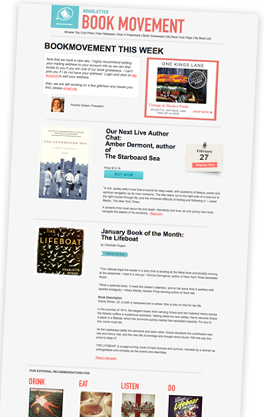BKMT READING GUIDES
My Brilliant Friend
by Elena Ferrante
Kindle Edition : 331 pages
261 clubs reading this now
14 members have read this book
Introduction
Soon to be an HBO series, book one in the New York Times bestselling Neapolitan quartet about two friends growing up in post-war Italy is a rich, intense, and generous-hearted family epic by Italy’s most beloved and acclaimed writer, Elena Ferrante, “one of the great novelists of our time.” (Roxana Robinson, The New York Times)
Beginning in the 1950s in a poor but vibrant neighborhood on the outskirts of Naples, Ferrante’s four-volume story spans almost sixty years, as its protagonists, the fiery and unforgettable Lila, and the bookish narrator, Elena, become women, wives, mothers, and leaders, all the while maintaining a complex and at times conflictual friendship. Book one in the series follows Lila and Elena from their first fateful meeting as ten-year-olds through their school years and adolescence.
Through the lives of these two women, Ferrante tells the story of a neighborhood, a city, and a country as it is transformed in ways that, in turn, also transform the relationship between her protagonists.
“An intoxicatingly furious portrait of enmeshed friends,” writes Entertainment Weekly. “Spectacular,” says Maureen Corrigan on NPR’s Fresh Air. “A large, captivating, amiably peopled bildungsroman,” writes James Wood in The New Yorker
Ferrante is one of the world’s great storytellers. With My Brilliant Friend she has given her readers an abundant, generous, and masterfully plotted page-turner that is also a stylish work of literary fiction destined to delight readers for many generations to come.
Discussion Questions
1. Why is Don Achille such an important character? His presence looms over the whole novel;what does he represent?
2. Throughout the novel, Lila earns her reputation as "the misfit," while Elena comes to be known as "the good girl." How do the two live vicariously through one another, and what is it about their differing personalities that makes their relationship credible? Which girl, if any, do you most easily identify with?
3. Domestic life in the outskirts of Naples in the 1950s is depicted as conservative, challenging, and at times, even severely violent. Ferrante uses the girls’ early "child play" to emulate the callous undertones of the town. Why is this analogy so successful? What is so important about Tina and Nu?
4. Why is Elena so invested in her education? Is it a means to an end, or an end unto itself? If a means to an end, what end? And if a means, is she being realistic or is she fooling herself?
5. What is revealed of the girls’ characters on the day they decide to skip school? Do these discoveries surprise you? How does this effect their relationship (or our sense of their relationship)?
6. Ferrante returns to the theme of "mother-daughter relationship" in My Brilliant Friend. What are the abiding characteristics of this relationship? Who do you feel suffers the most—mother or daughter? Why?
7. It can be assumed that Elena’s voice is behind the title of the novel, referring to Lila as "her brilliant friend." However, toward the end of the girls’ story, it is Lila who praises Elena, and encourages her to be "the best of all, boys and girls" (pg. 312). Is this dialogue between the two girls symbolic of Lila’s surrender? Are you surprised by Lila’s words?
8. Lila’s rustic personality and crude comments sometimes come off as hurtful and malicious. Furthermore, although both families struggle with poverty, it is the Cerullos who appear to be the underprivileged of the two. Why, nonetheless, does Elena remain a highly devout friend? What does this say about Elena?
9. What do the shoes that Lila designs and makes represent symbolically? What undertones do the shoes help to evidence in the latter half of the novel?
10. How would the book be different if told from the point of view of Lila or another character? Is Elena's point of view the most appropriate? Why or why not? Explain.
11. Page 282: "Do you love Stefano?" She said seriously, "Very much." "More than your parents, more than Rino?" "More than everyone, but not more than you." Lila’s personality seems to have grown warmer by the end of the novel. What can we attribute this change to?
(Questions issued by the publisher.)
Book Club Recommendations
Recommended to book clubs by 13 of 24 members.
Book Club HQ to over 90,000+ book clubs and ready to welcome yours.
Get free weekly updates on top club picks, book giveaways, author events and more








